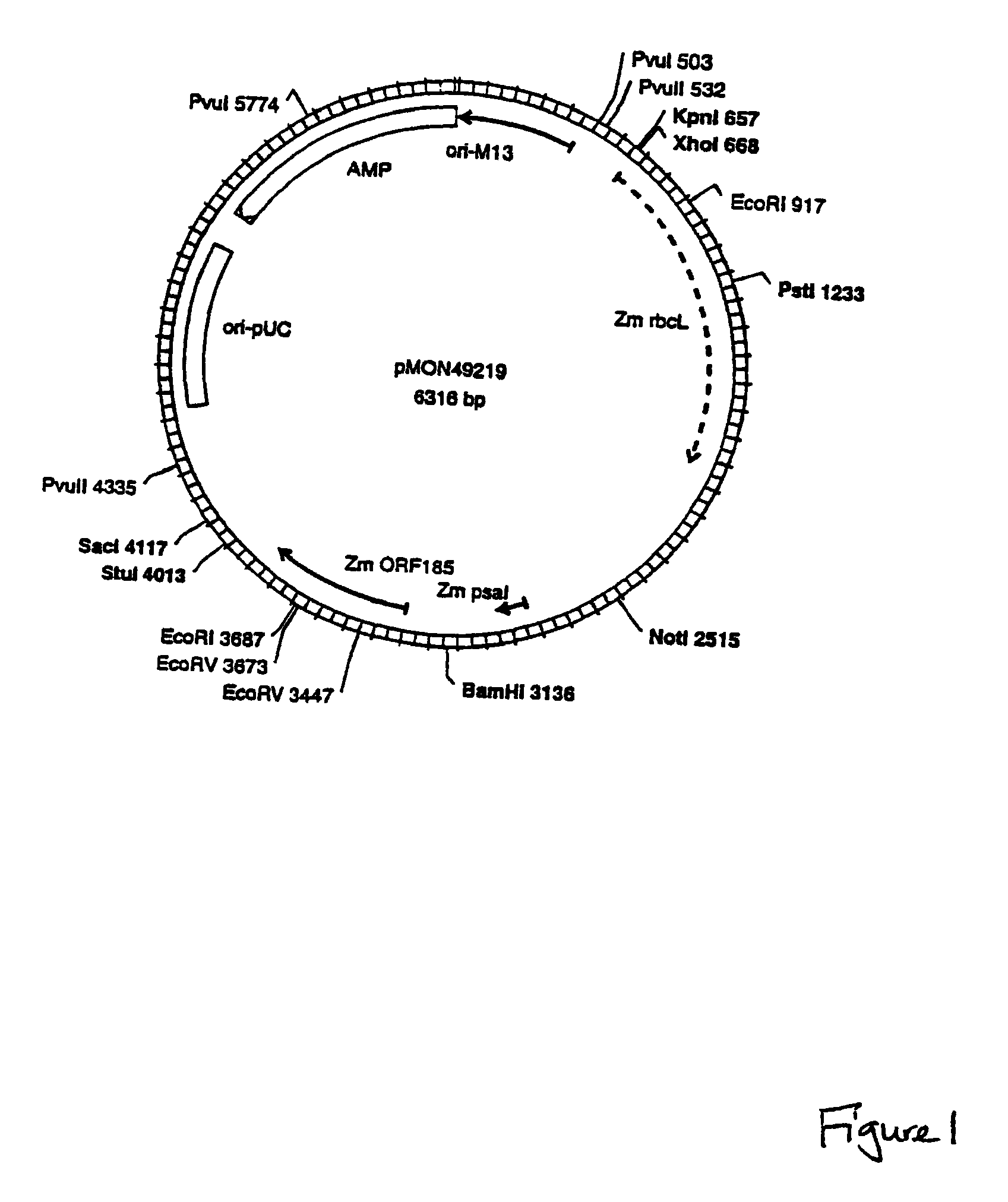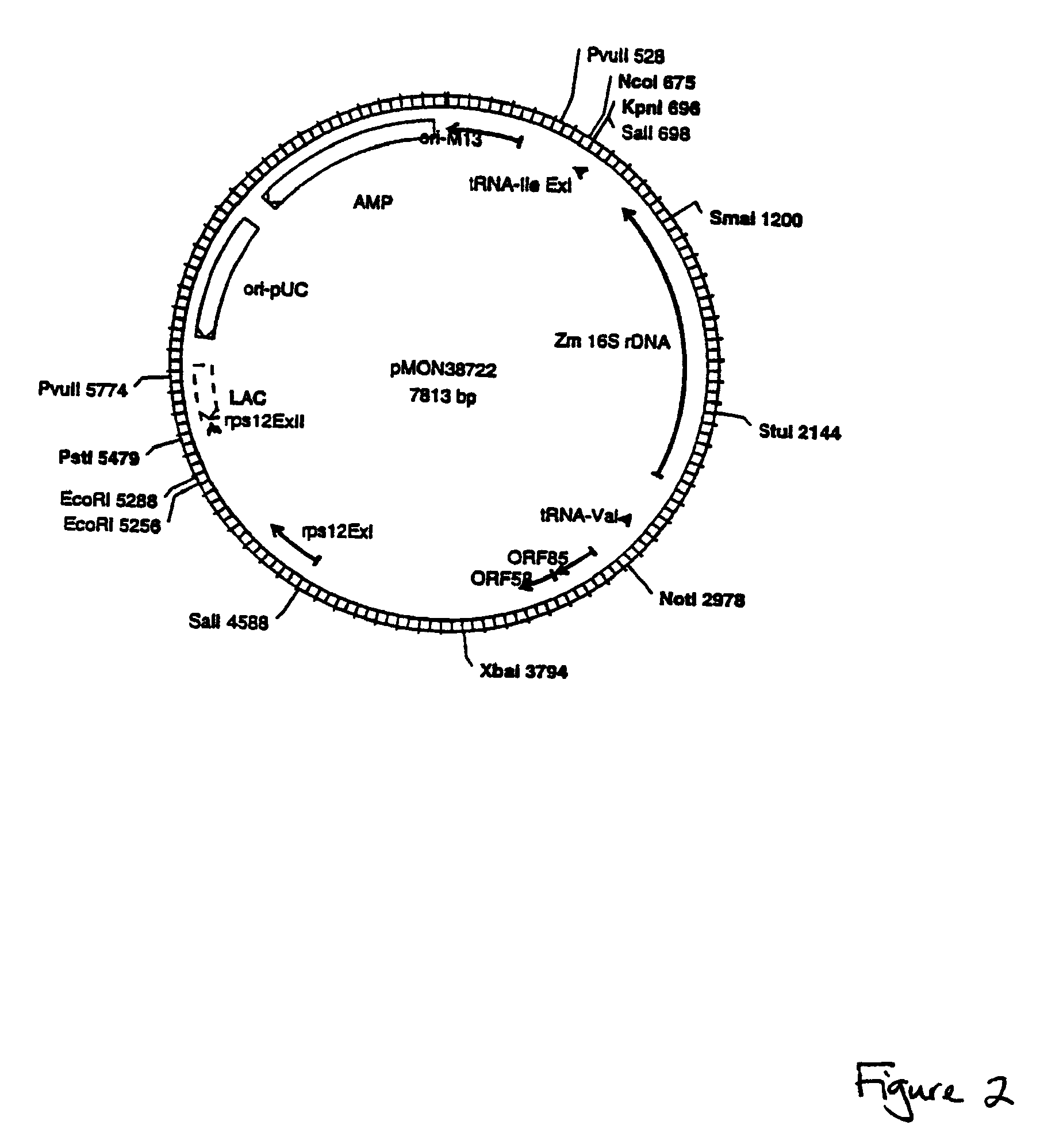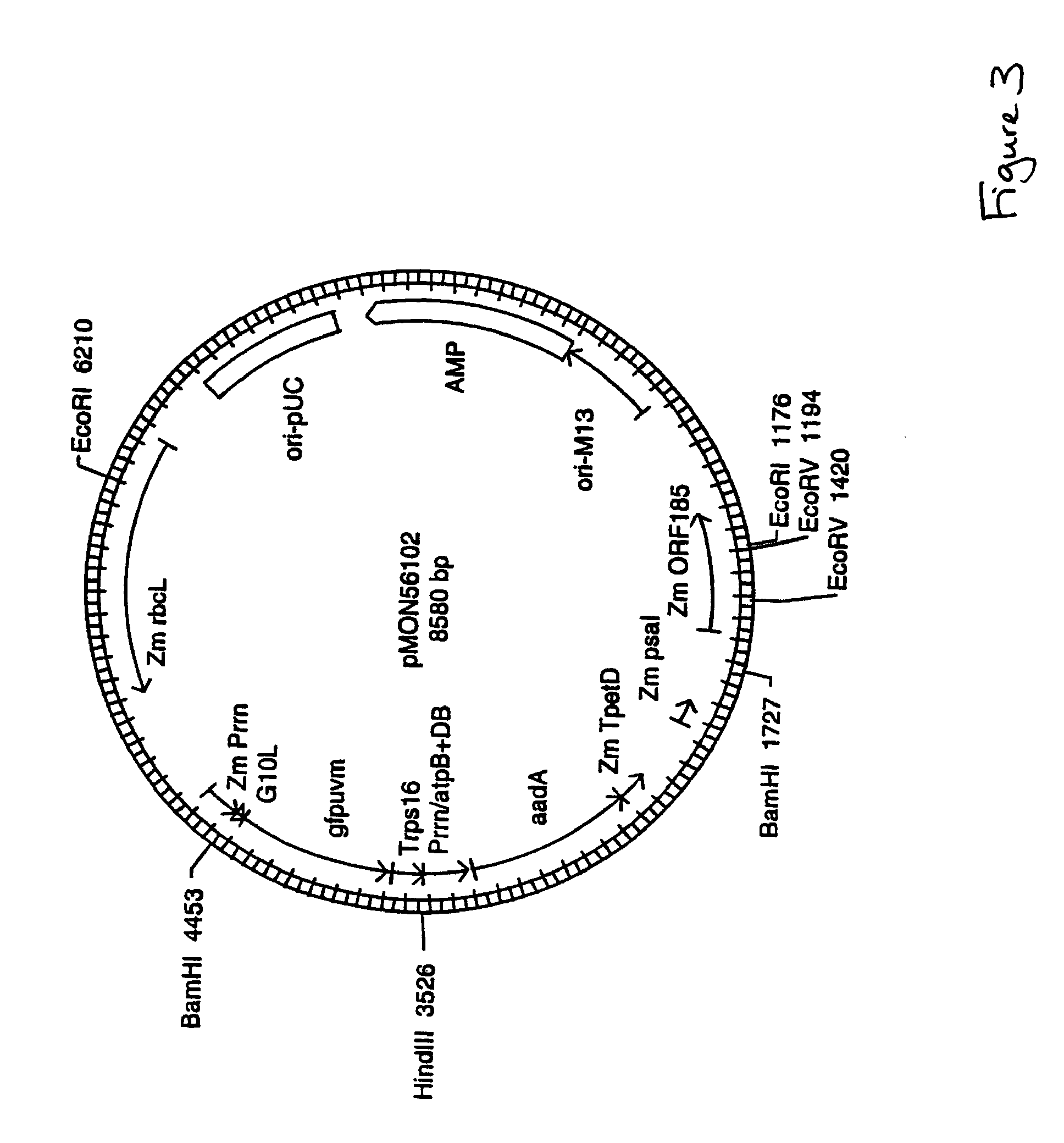Plastid transformation of maize
a technology of maize and plastids, applied in the field of plastid transformation of maize, can solve the problem of high levels of foreign gene expression
- Summary
- Abstract
- Description
- Claims
- Application Information
AI Technical Summary
Problems solved by technology
Method used
Image
Examples
example 1
Vector Constructions
[0090]Plastid vectors optimally contain several critical elements: a highly expressed selectable marker, a reporter gene for easy screening and identification of transgenic plastids, and a transgene insertion site that does not negatively influence expression or function of the transgene or the neighboring endogenous plastid genes.
[0091]Insertion Sites:
[0092]Plastid vectors are designed to target transgene integration into the plastid genome via homologous recombination. The location of transgene insertion must be chosen such that the insertion does not cause any disruption of normal plastid function. This is achieved by cloning the transgenes into a plastid intergenic region where no open reading frames exist, preferably such that readthrough transcription from the transgenes into neighboring resident plastid genes is avoided. Two plastid genomic locations are targeted for insertion of transgenes: the Large Single Copy region and the Inverted Repeat region. Beca...
example 2
Initiation and Establishment of Green Multiple Bud Cultures as Target Materials
[0127]Plant Materials:
[0128]For the present invention, plants of hybrids Pa91×H99 were grown in a greenhouse or in the field with normal growth conditions for maize plants. Plants of Pa91×H99 were pollinated with pollen from line A188 plants to form embryos with genotype of (Pa91×H99)×A188 (also known as triple hybrid, or PHA). The hybrid ears were harvested approximately 10 days after pollination. Immature embryos were isolated the same day when the ears were harvested or after the ears were stored in a refrigerator (4° C.) for one to several days.
[0129]Establishment of Light-Grown Green Multiple Bud Cultures:
[0130]Green multiple bud cultures (also sometimes called green meristematic cultures) can be established from a variety of tissues. In some cases, green multiple bud cultures are established from dark-grown embryogenic callus that is transferred to light and maintained for several subcultures on MS2...
example 3
Greening Embryogenic Callus as Target Material
[0164]Light-grown multiple bud cultures have been shown above to be successful for plastid transformation. However, the frequency of transformation in the light-grown cultures is very low. In contrast, dark-grown embryogenic callus is typically highly transformable when nuclear transformation is performed, but these cultures contain only undeveloped plastids and so may not be ideal for plastid transformation. “Greening” embryogenic cultures that contain more developed plastids but still maintain the high transformability of dark-grown cultures would be advantageous and may be useful as target materials for plastid transformation.
[0165]To establish greening embryogenic cultures, dark-grown embryogenic callus must first be initiated. Young ears of inbred or hybrid maize lines (e.g., H99, PHA for Type I embryogenic callus and HiII or LH198×HiII for Type II embryogenic callus) are sterilized in 50% bleach (bleach contains 5.25% sodium hypoch...
PUM
| Property | Measurement | Unit |
|---|---|---|
| time | aaaaa | aaaaa |
| rupture pressures | aaaaa | aaaaa |
| temperature | aaaaa | aaaaa |
Abstract
Description
Claims
Application Information
 Login to View More
Login to View More - R&D
- Intellectual Property
- Life Sciences
- Materials
- Tech Scout
- Unparalleled Data Quality
- Higher Quality Content
- 60% Fewer Hallucinations
Browse by: Latest US Patents, China's latest patents, Technical Efficacy Thesaurus, Application Domain, Technology Topic, Popular Technical Reports.
© 2025 PatSnap. All rights reserved.Legal|Privacy policy|Modern Slavery Act Transparency Statement|Sitemap|About US| Contact US: help@patsnap.com



